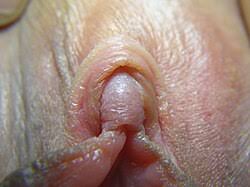“The clitoris is not a button to press, but a keyboard to play.” — Dr. Laurie Mintz, author of Becoming Cliterate
Despite being the most sensitive and pleasure-rich part of the female anatomy, the clitoris remains one of the most misunderstood. It’s often overlooked in both education and erotic encounters—yet it plays a central role in female sexual pleasure.
Understanding how to stimulate the clitoris, with consent, communication, and technique, can unlock deeply satisfying experiences. In this article, we’ll dive into anatomy, science-backed strategies, do’s and don’ts, and answer frequently asked questions—all to help you explore clitoral stimulation with knowledge and respect.
Clitoral Anatomy 101: More Than Meets the Eye
While most people associate the clitoris with the small external nub above the vaginal opening, it’s actually a much larger structure.
According to a 2005 study by Dr. Helen O’Connell (published in The Journal of Urology), the clitoris extends internally, forming a wishbone-like shape with:
- Glans (visible tip)
- Body (beneath the surface)
- Crura (legs extending into the pelvis)
- Bulbs of the vestibule (swell during arousal)
Key Facts:
- Contains over 8,000 nerve endings, more than any other part of the human body.
- Designed exclusively for pleasure—it has no reproductive function.
- Most women need direct or indirect clitoral stimulation to orgasm.
Why Clitoral Stimulation Matters

Scientific Evidence
A landmark study from the Journal of Sex & Marital Therapy (2017) found that only 18% of women consistently orgasm from vaginal intercourse alone, while over 75% require clitoral stimulation—either through oral sex, manual touch, or sex toys.
In other words, penetration without clitoral involvement leaves most women unsatisfied.
Techniques for Ultimate Clitoral Pleasure
1. Start Slow and Build Arousal
Rushing to the clitoris can be overwhelming or uncomfortable. Instead:
- Begin with kissing, neck, ears, thighs
- Gradually move to the pelvic area
- Warm hands, eye contact, and words of affirmation enhance safety and arousal
2. Use Lube Generously
The clitoris is sensitive and friction can irritate it.
- Use water-based lubricants for manual or oral stimulation
- Silicone-based lubes last longer for external play
- Arousal gels can increase sensitivity—but use with care
3. Try Light Touch First
Techniques to try:
- Circular motions with a finger
- Feather-light tapping
- Up-and-down rubbing just above the glans
- Experiment with pressure, from light to firm
- Avoid overstimulation of the bare glans unless already highly aroused
4. Explore the Hood
The clitoral hood covers the glans and protects it. Stimulating the hood:
- Allows indirect pleasure
- Prevents overstimulation
- Ideal early in foreplay
Pro tip: Use two fingers to gently pull back the hood, or use a moist finger to circle the area where the hood meets the glans.
5. Oral Stimulation (Cunnilingus)
Highly effective for clitoral stimulation:
- Use flat tongue strokes, not just the tip
- Vary rhythm, pressure, and direction
- Pay attention to her breathing, moans, or feedback
- Combine with fingers inside the vagina for G-spot and clitoral combo stimulation
6. Vibrators and Toys
Many women find external vibrators provide unmatched stimulation.
- Start with low settings and increase gradually
- Use broad-headed toys for overall stimulation, or bullet vibrators for pinpoint pleasure
- Try suction toys (e.g., Womanizer or Satisfyer Pro) for air-pulse stimulation
A 2020 study in Sexual Medicine Reviews found that women who used sex toys regularly were more likely to report higher sexual satisfaction and orgasm frequency.
7. Combine Internal and Clitoral Stimulation
The clitoral network connects internally to the G-spot area. Try:
- One or two fingers inside the vagina (hooking motion)
- Simultaneous external clitoral touch or suction
- “Come here” motion while stimulating clitoris with thumb or tongue
8. Use Rhythmic Patterns
The clitoris responds well to consistent rhythm and repetition.
- Let her guide you verbally or through body language
- Avoid switching techniques too often unless asked
- Some women enjoy “edging”—building up to orgasm, then stopping
Clitoral Stimulation: Do’s and Don’ts

Do:
- Communicate throughout (ask “Does this feel good?”)
- Watch her nonverbal cues
- Use lubrication
- Respect if she says “no,” “stop,” or seems uncomfortable
❌ Don’t:
- Go straight to the clit with pressure
- Rub it dry or without warm-up
- Assume all women like the same thing
- Take orgasm as the only goal—pleasure is the journey
Common Barriers to Pleasure
1. Shame or Guilt
Cultural or religious beliefs may cause discomfort. Affirming consent and creating emotional safety is essential.
2. Performance Anxiety
Feeling pressure to orgasm or “please” can reduce sensitivity. Emphasize exploration, not expectation.
3. Medical Conditions
- Clitoral phimosis (tight hood)
- Hormonal changes (e.g., menopause)
- Medications like antidepressants can reduce sensation Consult a doctor or sex therapist if issues persist.
Clitoral Stimulation in Long-Term Relationships
Over time, partners may fall into a routine or forget the importance of clitoral touch. Keeping the spark alive means:
- Trying new positions
- Incorporating sex toys
- Exploring mutual masturbation
- Taking turns focusing solely on one partner
A 2021 study in the Archives of Sexual Behavior confirmed that variety in sexual practices directly correlates with long-term sexual satisfaction in couples.
Popular Positions and Setups for Clitoral Access
1. Face-to-Face
- One partner lies between the other’s legs
- Allows eye contact and full control
2. Woman on Top (Cowgirl or Reverse)
- She can rub her clitoris against the pelvis or with her hand
- More control over pace and pressure
3. Spooning with Hand Access
- Comfortable and intimate
- One partner can reach around to stimulate clitoris during penetration
4. Sex Pillow Elevation
- Use a wedge pillow or folded towel to tilt the pelvis
- Enhances clitoral access during oral or manual stimulation
Frequently Asked Questions (FAQs)
1. Can every woman orgasm from clitoral stimulation?
Most can with the right context and technique, but some may need time, emotional safety, or professional help due to trauma, medical issues, or psychological blocks.
2. Is clitoral stimulation better than penetration?
For most women, clitoral stimulation is more reliable for orgasm, but combining both often leads to the most intense pleasure.
3. Does size or shape of the clitoris affect pleasure?
No. While visibility and sensitivity vary, every clitoris has the same network of nerves. Technique and comfort matter more.
4. Can too much stimulation hurt the clitoris?
Yes. Overstimulation, especially without lube or during hypersensitivity post-orgasm, can be uncomfortable or painful. Always communicate and stop if needed.
5. Are orgasms from the clitoris different from G-spot orgasms?
Yes and no. Clitoral orgasms tend to be sharper and more focused. G-spot orgasms (which still involve internal clitoral roots) may feel deeper or more full-body. Some women describe blended orgasms—the most intense of all.
Expert Tips and Quotes
- Dr. Laurie Mintz: “We must teach that clitoral stimulation is the rule, not the exception, when it comes to female pleasure.”
- Emily Nagoski, author of Come As You Are, says: “Pleasure is the measure. If it feels good, you’re doing it right.”
Final Thoughts
The clitoris is a powerhouse of pleasure, but unlocking its full potential takes communication, curiosity, patience, and care. Whether you’re exploring solo or with a partner, the journey toward clitoral pleasure is an ongoing discovery, not a destination.
There’s no “one right way” to stimulate the clitoris—what matters most is that it’s consensual, connected, and pleasurable.
“The most erotic part of the body is the mind. But the clitoris is a close second.”
